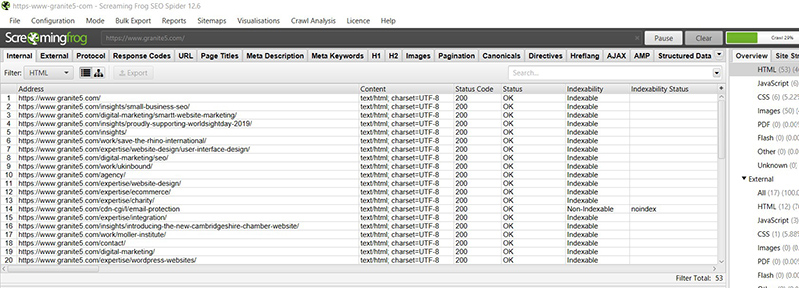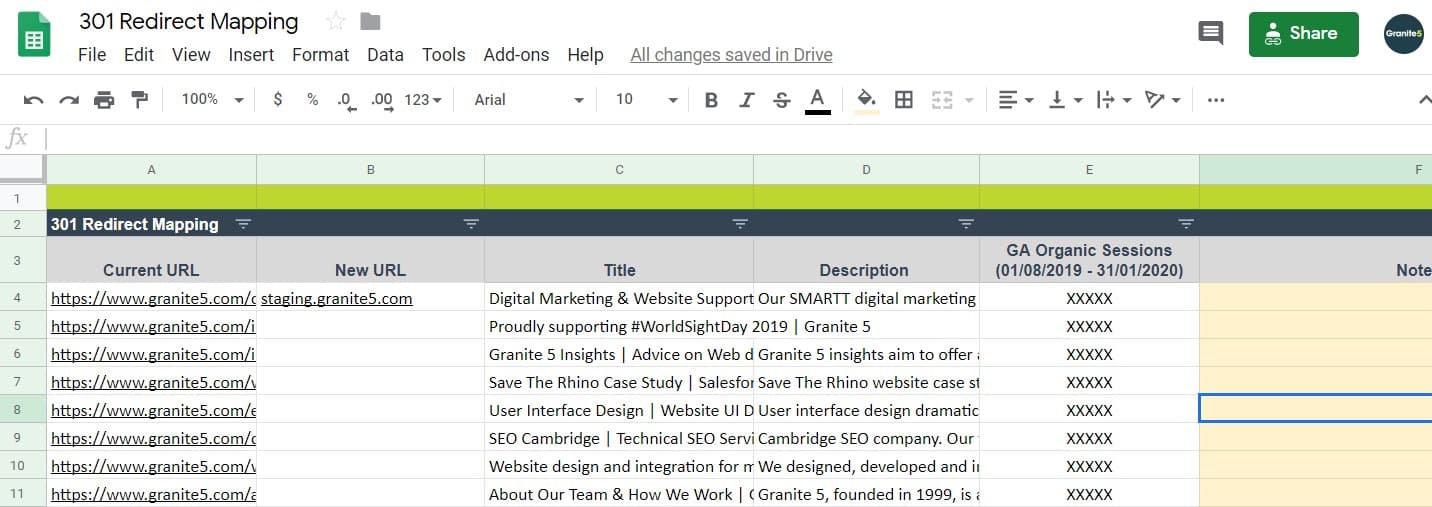A simple guide to 301 redirect mapping
4 min read

If you redesign, restructure or rebrand your website, you will need to create an SEO website migration strategy. An essential part of this strategy is mapping and implementing 301 redirects.
Without a redirect map, you risk losing valuable search traffic and business from your website.
We’ve seen websites that have lost 50-60% of their Google traffic when 301 redirects have not been implemented correctly.

What is a redirect
A redirect is a way for your website to send a quick message to your reader’s browser and tell them that the page they want to visit has been moved, so their browser can automatically point them to the new page of your choice.
The three most commonly used redirects are 301, 302, and Meta Refresh.
- 301 redirect: Moved Permanently
- 302 redirect: Found / Moved temporarily
- Meta Refresh
The 301 redirect is preferable for both users and search engines. Serving a 301 indicates to both browsers and search engine bots that the page has moved permanently.

How redirects impact SEO
301 redirects are very important for SEO and can be the difference between a successful site rebuild and an unsuccessful one. There are several ways they can be useful:
- Keeping visitors engaged in your site: If a visitor clicks on a link and is presented with a 404 page, this will negatively affect their experience of the site and could cause them to become frustrated and leave.
- Helping stop traffic loss: Search engines want to provide the best content, not 404 pages. If users keep landing on 404 pages you could see a drop in ranking and organic traffic. As it takes time for search engines to crawl and index the new website. Implementing redirects can help to speed up this process and reduce the chance for potential traffic loss.
- Improving URL structure: This process gives you a chance to review your URL structure. Altering from unfriendly URL’s domain.com/courses/?category=4 to a “friendly” alternative (which is good for usability, accessibility and search) like domain.com/courses/business
- Link equity: 301 is the preferred choice of 3xx redirects for SEOs due to its proven ability to pass on around 90% link equity from the redirected page. This is the authority that the website / URL has built with the search engines.
A bad implementation might cause all kinds of trouble, from loss of PageRank to loss of traffic. Redirecting pages is a must if you make any changes to your URLs. After all, you don’t want to see all the hard work you put into building an audience and gathering links to go down the drain.
How To Create The 301 Redirect Map
The process is simple enough that all you need is Excel or Google Sheets and time. Excel wizards may be able to create some powerful sort techniques, especially for large sites.
Gathering old URLs
There are various methods of gathering old URLs. Starting places include XML sitemaps, Google Analytics, crawling apps or developers may be able to provide a list.
My personal preference is to use the crawling app Screaming Frog. The Screaming Frog SEO Spider is a website crawler, that allows you to crawl websites’ URLs to analyse & audit technical & onsite SEO. Their Google Analytics API functionality enables you to pull in data directly during a crawl helping give you insight into which are the most important pages to redirect.

Mapping to the new site
Once you have your old URL’s in a list it’s time to start mapping to the new URLs. Unless you have a very large website a simple Excel or Google sheet should cover your requirements.
I use the following columns set-up to help map the redirects
- Current URLs: The list of the current website URL’s
- New URLs: Enter data for the new URL’s
- Title: Current page meta title. This might help you to determine the content of the URL to speed up the process.
- GA Organic Sessions: The number of organic sessions for that URL. This help to prioritise pages that should be redirected.
- Notes: A section to add notes. This can help to flag potential issues such as if important content isn’t transferring to a new site or if the URL string might need to be altered.

Then start the time-consuming process of aligning the redirects within the spreadsheet.
Uploading redirects
Now that you finished redirect mapping its time give it to the developers for implementation. This article is predominantly aimed at WordPress users, other platforms may use different mechanisms for 301 redirects. Normally redirects for WordPress websites will be implemented in two ways via .htaccess or an easier approach to create and manage 301 redirects via a plugin.
Testing and measuring
After your website is launched it important to test if the redirects have been implemented correctly.
As your redirect map spreadsheet contains all the old URLs and traffic stats that’s the best place to start. Test the URL’s of the important pages and monitor if they 301 redirect to the correct location.
There’s a help free chrome extension called Redirect path which can help you determine if the redirects have been implemented correctly.
Extra tip – We set up 404 event tracking in Google Analytics via Google Tag Manager. This allows you to easily monitor the number of users landing on 404 pages and can give you referral data to help locate and then fix the 404.
The process of implementing a 301 redirect strategy is more time-consuming and comprehensive than a simple article can convey, but it’s an essential technical SEO task.
Redesigning or migrating a website can often harm SEO performance. The only recourse for preventing permanent, significant traffic loss is an airtight 301 redirect map.
Granite 5 offers a range of technical SEO services that creates a foundation for your website to improve search performance.
